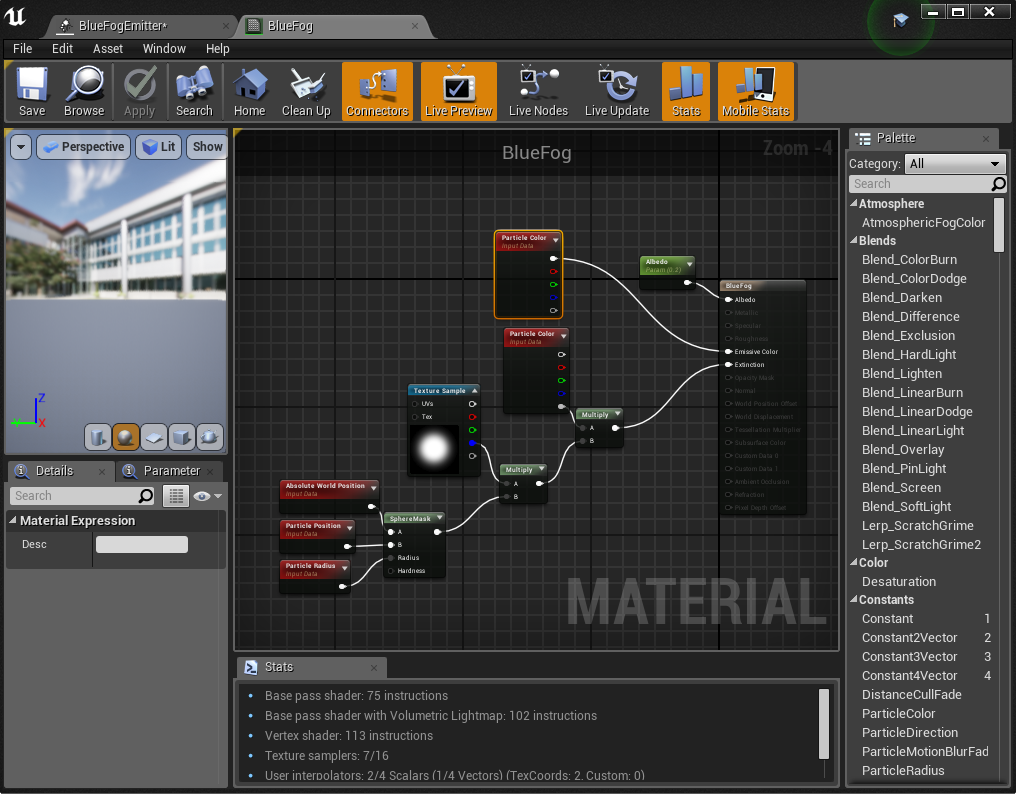Volumetric Fog is a great visual effect that currently is very specifically designed for areas a player may be walking in a relatively flat map, or areas they may be looking up from or down to with some elevation changes. Given the difficulty of computation, it's currently not otherwise supported (for example, varying based on camera view-angle), but it is still a very powerful tool and great system to be comfortable with explaining its significance to a team. To start, once more let's take a look at what is already in FrozenCove, and then we'll modify it a bit:

These settings give a nice subtle fog that only begins fairly distant from the placement of the height fog object. So, once again for demonstration purposes, we'll make it a bit more extreme (and the more observant will notice the particles in the foreground that we'll discuss next):

The level uses traditional particles, which we discussed previously due to their blending performance cost, to simulate snow-banks; but as you'll see, we could do this with a Volumetric Fog particle emitter too, which you can view in the map now. However, for this emitter to work, we need to switch the height fog's Volumetric Fog setting to be true (currently the box is unchecked). Note that while we'll discuss later how to optimize a bit of your Lightmass output if necessary. If you use Volumetric Fog this way you should remain cognizant of the potential performance costs and use the techniques from Chapter 8, Shader Editing and Optimization Tips. So let's take a look at a material we can add to a particle system to get dynamic changing and colored Volumetric Fog:

Now, with this material as-is, added to the emitter in the scene, you get a rather hard-to-miss blue (which was the original intent), here:

It turns out, if you disconnect the emissive color, this is a much more subtle effect, matching the fog's natural color. This is what is in the GitHub project presently:

Volumetric Fog both local and global can really make or break the immersion of a scene, so while the whole point here is to be confident using them, it's a big help to have some experienced environmental artists around to make sure they're not overused in a scene aesthetically, in addition to possible performance costs already discussed.